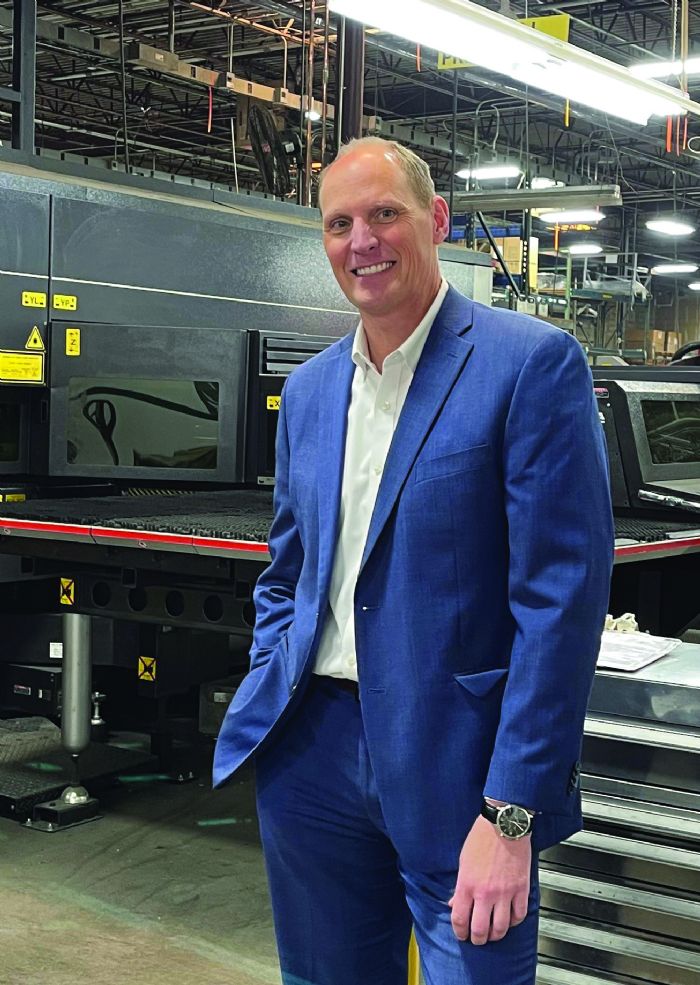Perspectives on Business Management with Metal Forming Company Execs
June 9, 2023Comments
Since January 2021, MetalForming magazine has conducted several Q&A sessions with executives at metal stamping and fabricating companies, providing an inside look at their management philosophies, and sharing their daily challenges and how they face them. Here we present highlights from two such interviews; to be interviewed for this column, email editorial director Brad Kuvin.
Q: What’s the best management-related book, webinar or event you’ve recently enjoyed, and what were one or two of the key takeaways?
 Mike Kemper, president and CEO of Lake Air Products, LLC, New Hope, MN: I recently re-read New Sales. Simplified, by Mike Weinberg. With our aggressive business-growth plan and using 80/20 principles on how and what customers we select to target, that book provides some good reminders about how to focus deliberately on specific customers, how to craft and communicate your “business stories,” and lastly, the skillsets needed for new-customer selling.
Mike Kemper, president and CEO of Lake Air Products, LLC, New Hope, MN: I recently re-read New Sales. Simplified, by Mike Weinberg. With our aggressive business-growth plan and using 80/20 principles on how and what customers we select to target, that book provides some good reminders about how to focus deliberately on specific customers, how to craft and communicate your “business stories,” and lastly, the skillsets needed for new-customer selling.
We recently completed a quad analysis at Lake Air, deciding what companies to categorize as A—those we’ll service fully; and B—those that fit our niche but may not get the top-level service that we provide to the As, including more competitive pricing and quicker turnaround. We then separate those two categories to create four quads.
- Quad One—the parts that we really want, those top 20 percent of the jobs that should provide 80 percent of the revenue.
- Quad Two—the parts that we have to run because they come from the same customer ordering Quad One parts.
- Quads Three and Four—these are the B customers, Quad Three being those parts that we’re good at making that generate a decent amount of revenue without a lot of business complexity, and Quad Four being more complex parts that consume excess time and energy. We’re shedding Quad Four parts, unless we can turn them into Quad Three parts and charge more for the added complexity. At the same time, we’re striving to identify new A customers, and to convert B customers into A—all based on achieving the revenue threshold we’re seeking.






 Kent Djubek, president of Ajax Metal Forming Solutions, Fridley, MN: We recently pulled our management team into our conference room for three days to broadcast the Dave Ramsey EntreLeadership Master Series training workshop. One of the standout speakers, for me, was Jocko Willink, whose book (Extreme Ownership: How U.S. Navy SEALs Lead and Win, Dichotomy of Leadership) my plant manager and I both purchased after hearing him speak.
Kent Djubek, president of Ajax Metal Forming Solutions, Fridley, MN: We recently pulled our management team into our conference room for three days to broadcast the Dave Ramsey EntreLeadership Master Series training workshop. One of the standout speakers, for me, was Jocko Willink, whose book (Extreme Ownership: How U.S. Navy SEALs Lead and Win, Dichotomy of Leadership) my plant manager and I both purchased after hearing him speak. 
 Event
Event Podcast
Podcast